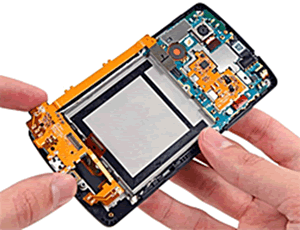The Power Conundrum
In this issue, Bob Hult examines the power conundrum: How to design electronic products that require either very high or very low levels of power.
 It seems like every day we hear about how the demand for power continues to soar along with a list of potential solutions: The generation of electrical power with less carbon released into the atmosphere is balanced by a host of suggestions to reduce power consumption. None of the proposals I have heard so far are likely to have a significant impact on global warming on a macro level. The debate continues to impact the electronics industry, which is inherently dependent on availability of electrical energy but is increasingly divided between devices that demand either more or less electrical power.
It seems like every day we hear about how the demand for power continues to soar along with a list of potential solutions: The generation of electrical power with less carbon released into the atmosphere is balanced by a host of suggestions to reduce power consumption. None of the proposals I have heard so far are likely to have a significant impact on global warming on a macro level. The debate continues to impact the electronics industry, which is inherently dependent on availability of electrical energy but is increasingly divided between devices that demand either more or less electrical power.
At one end of the spectrum, large data centers and supercomputers can consume megawatts of power, much of which is spent in cooling equipment used to remove waste heat from inefficient components and high-speed computational processing. Passive cooling strategies have evolved to active forced air processes (and even circulating liquid cooling) in order to keep devices below critical junction temperatures. Availability of relatively low-cost electrical power has become a major element in the site selection process for new installations. Subsystem suppliers such as power supply manufacturers have responded with AC-to-DC power supplies and DC-to-DC converters that deliver efficiency in the low 90% range and often tout higher packaging density of their products in terms of watts per cubic inch.
How Connector Suppliers Respond
 Connector manufacturers have addressed the issue with entirely new families of power connectors that can conduct hundreds of amps per square or linear inch of printed circuit board space. The EXTreme PowerMass board-to-board connector from Molex is rated up to 350A per linear inch.
Connector manufacturers have addressed the issue with entirely new families of power connectors that can conduct hundreds of amps per square or linear inch of printed circuit board space. The EXTreme PowerMass board-to-board connector from Molex is rated up to 350A per linear inch.
These connectors often consist of modular molded assemblies that allow near-custom combinations of contact sizes including low-current signal contacts used for system monitoring and control. New contact configurations are being optimized by utilizing copper alloys that sport higher bulk conductivity while the housings are vented to allow air to freely circulate around the contacts that keep them cooler.
Industry demand has stimulated a competitive race to ever-higher current density ratings. FCI recently increased the rated current of its Pwr TwinBlade wire-to-PCB connector to 100A per contact by extending the wire size range to #2 AWG. Constantly increasing demand for higher current in smaller spaces has completely transformed what was at one time a relatively stable niche of the connector market.
Battery Power
At the other end of the spectrum is the burgeoning market for mobile electronic communication, entertainment, Internet access, GPS, and medical monitoring products. Mobile products depend on rechargeable battery power in order to provide many hours of performance. Many of these devices, including desktop/laptop computers, tablets, and e-readers, as well as smartphones, utilize processors featuring ARM architecture that minimize power consumption to extend battery life. Battery chemistry has been remarkably improved in terms of power density, physical size, and weight reduction, but still imposes limitations on performance.
The majority of mobile products utilize Wi-Fi, Bluetooth, or ZigBee technology for wireless connectivity, increasing drain of the battery. Wireless low-energy Bluetooth Smart, incorporated in Bluetooth 4.0 (LE) and aimed at applications in the healthcare, fitness, security, and home entertainment industries, uses less than half of the power required by classic Bluetooth while maintaining similar performance. Broadcom announced a Bluetooth system-on-chip (SoC) that integrates ARM architecture and wireless charging into a single chip to minimize power consumption. This chip is only 6.5 x 6.5mm and can be powered by a coin cell battery, making it ideal for wearable and embedded computing applications.
 Due to the typically low current levels in these applications, power connectors can be as simple as a low-voltage DC plug and jack that range from 6mm down to 2.1mm in diameter. Lugging a “wall wart” and remembering to charge a mobile device is driving the growth of wireless inductive chargers. Not only are they more user-friendly, but an external connector and required mounting hole in the device is eliminated.
Due to the typically low current levels in these applications, power connectors can be as simple as a low-voltage DC plug and jack that range from 6mm down to 2.1mm in diameter. Lugging a “wall wart” and remembering to charge a mobile device is driving the growth of wireless inductive chargers. Not only are they more user-friendly, but an external connector and required mounting hole in the device is eliminated.
Internal Power Connectors
 Internal power connectors are often integrated with a variety of signal contacts into a single, flat, etched circuit interconnect assembly. In the consumer world everything is about low cost and size and weight reduction. Low-profile FEC connectors with contacts on 0.20mm centerlines satisfy space and cost requirements.
Internal power connectors are often integrated with a variety of signal contacts into a single, flat, etched circuit interconnect assembly. In the consumer world everything is about low cost and size and weight reduction. Low-profile FEC connectors with contacts on 0.20mm centerlines satisfy space and cost requirements.
Utilizing a single connector for multiple purposes is another strategy being used to minimize connector count and cost. The micro USB-B connector was selected by the European Union to be the standard charging interface on smartphones produced by 14 major manufacturers and has become the de facto global standard interface for smartphone battery chargers.
The power connector requirements in consumer applications are considerably different from those in a data center. Connectors must offer exceptionally low milliohm resistance, consume minimal space, and weigh practically nothing. Unlike power connectors in large computing systems that live in controlled environments and are serviced by trained technicians, pluggable interfaces in consumer products must survive many mating cycles in harsh environments. One solution for internal interconnects has been to simply replace a connector with a permanently soldered joint. Relatively few of these devices are repaired as consumers typically replace the item rather than pay to repair an obsolete device.
Energy Harvesting
 Interest continues to grow in the concept of eliminating the battery and powering mobile devices using only locally harvested ambient energy. The battery is often one of the largest and heaviest components in many of today’s mobile devices. Energy harvesting may be a way to eliminate that ballast. The exceptionally low energy levels of scavenged power are measured in microwatts, but may be adequate to support newer applications in wearable/implanted electronics and remote sensor networks. Harvested energy is based on a variety of technologies including kinetic energy (e.g. vibration), electromagnetic energy (radio/cellular/TV transmissions), thermoelectric (thermal differential), and piezoelectric (mechanical deformation). The ability to operate a device without charging or replacing a battery is very attractive. Connectors designed into these devices will require even lower resistance and profile, yet be capable of surviving consumer/industrial/battlefield environments.
Interest continues to grow in the concept of eliminating the battery and powering mobile devices using only locally harvested ambient energy. The battery is often one of the largest and heaviest components in many of today’s mobile devices. Energy harvesting may be a way to eliminate that ballast. The exceptionally low energy levels of scavenged power are measured in microwatts, but may be adequate to support newer applications in wearable/implanted electronics and remote sensor networks. Harvested energy is based on a variety of technologies including kinetic energy (e.g. vibration), electromagnetic energy (radio/cellular/TV transmissions), thermoelectric (thermal differential), and piezoelectric (mechanical deformation). The ability to operate a device without charging or replacing a battery is very attractive. Connectors designed into these devices will require even lower resistance and profile, yet be capable of surviving consumer/industrial/battlefield environments.
The Internet of Things portends huge increases in new mobile product development as everything from implantable sensors to home automation transforms the market. Connectors used to in both low- and high-current applications will require continual development in order to meet these emerging challenges.
Robert Hult, Market Director, Bishop & Associates, Inc.
- Optics Outpace Copper at OFC 2024 - April 16, 2024
- Digital Lighting Enhances your Theatrical Experience - March 5, 2024
- DesignCon 2024 in Review - February 13, 2024







